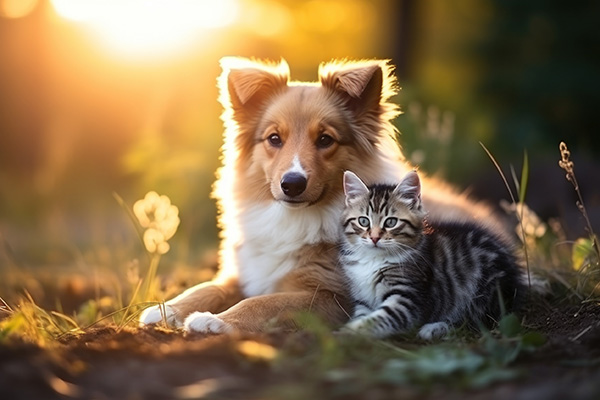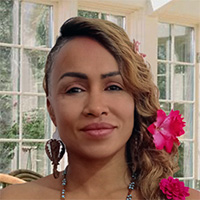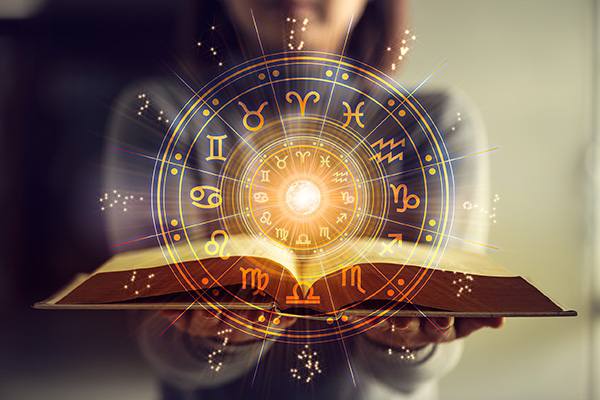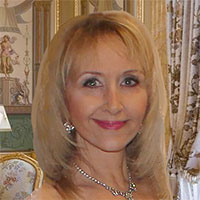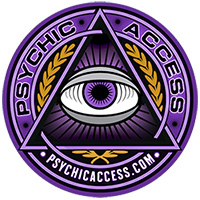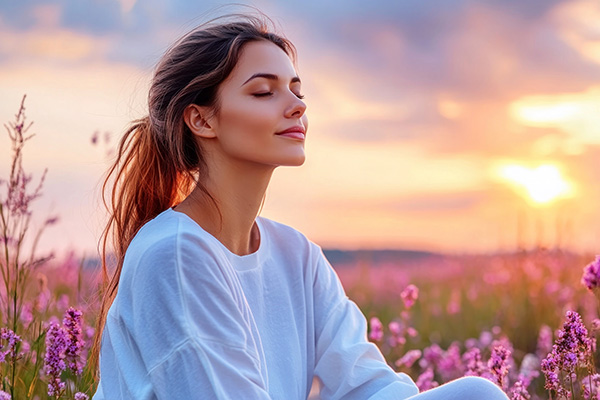Grasping the Importance of Comprehending Your ‘Why’
 In a recent spiritual coaching session, I had the honor of assisting a woman who was confronting a significant life obstacle — stage 2 locally advanced colon cancer.
In a recent spiritual coaching session, I had the honor of assisting a woman who was confronting a significant life obstacle — stage 2 locally advanced colon cancer.
She expressed herself with a quiet strength as she shared her experiences through chemotherapy prior to surgery, followed by four additional rounds of adjuvant chemotherapy.
Her words were almost devoid of emotion, but the intensity of her experience was distinctly felt. It was a narrative of survival, determination, and an unwavering desire to press on.
She subsequently confessed that she yearned for a healthier lifestyle, yet battled with poor dietary choices. She had accumulated a considerable amount of weight post-surgery, and despite her sincere efforts, she found it challenging to resist sugary and processed foods.
Upon listening to her narrative, I delicately reminded her that I was not qualified to provide medical guidance. Furthermore, I am not a nutritionist, and I encouraged her to seek professional support for her dietary requirements.
However, I could offer her a means to disrupt the cycle of unhealthy patterns. I could assist in nurturing her mindset and emotions, steering her toward a more balanced and fulfilling life.
She beamed with hope. “That would be amazing!” she responded.
“To achieve that,” I replied, “we need to uncover your ‘why.’ Once you identify your deeper motivation, your genuine reason for change, everything will start to shift.”
Thus, we embarked on a straightforward yet significant exercise.
The two most pivotal days in one’s life are the day of your birth and the day you uncover your purpose ~ Mark Twain
<p“Why do you wish to cease unhealthy eating habits?” I queried.
“Because I want to become healthier and stronger!” she quickly answered.
“Why?” I gently probed.
“I want to look and feel better. I want to regain my vitality and perform my daily activities like I used to. I want to feel vibrant again.”
“Why?” I inquired once more.
She hesitated briefly before responding. “Because I want to be a supportive and loving wife and mother. I aspire to be present for my family.”
“Why?”
She contemplated for a moment. “Because I love my family. I want to be with them for as long as I can. I wish to savor my moments with them. I want to live.”
A significant silence enveloped us as realization struck her. “You have discovered your ‘why,’” I stated. “This is your motivating force. When temptation arises, remember this deeper purpose. When you feel weak, return to your ‘why.’ It will empower you.”
This simple yet profound shift in perspective transformed everything for her. Armed with this newfound awareness, she has commenced her journey with revitalized resolve. In time, Spirit revealed to me, she will shed the excess weight, feel invigorated, and exude a sense of empowerment that she hasn’t experienced in years.
You too can achieve this.
Within you lies a masterpiece, unlike any ever created or that will ever be ~ Gordon Mackenzie
The Importance of Understanding Your ‘Why’
Grasping your ‘why’ transcends merely achieving goals; it is about cultivating a life enriched with meaning, passion, and fulfillment. Here is how it can influence your journey:
A clearer sense of direction: Lacking clarity of purpose can make life feel like a monotonous cycle of routine. Your ‘why’ serves as a compass, guiding you toward the direction that resonates with your soul’s true calling.
Resilience during adversity: Challenges are inevitable, but when fueled by a deeply ingrained purpose, obstacles lose their capacity to derail you. Your ‘why’ reminds you of the worthiness of the struggle, energizing your persistence.
A more genuine life: Authenticity attracts people. When your actions align with your true purpose, you naturally draw in opportunities, relationships, and experiences that harmonize with your soul’s essence.
A wellspring of inspiration and creativity: Passion ignites innovation. When you are genuinely invested in your purpose, creative solutions and inspired thoughts flow effortlessly. You will discover novel ways to surmount challenges and reach your highest potential.
“I believe each of us has a mission in life, and that one cannot truly be living their most fulfilled life until they recognize this mission and dedicate their life to pursuing it ~ Blake Mycoskie
Discovering Your ‘Why’
Unraveling the driving force behind your transformation is an introspective journey. It begins with sincere self-reflection and an openness to pose the right questions:
What genuinely brings you joy? Contemplate the hobbies and activities that invigorate you and give you a sense of purpose. What ignites your passion?
What are your strengths? Reflect on previous experiences where you felt fulfilled and accomplished. What innate abilities do you possess?
What values characterize you? Pinpoint the principles that hold the utmost importance — whether it’s love, freedom, creativity, or service.
What do others perceive in you? Sometimes those closest to us recognize our gifts and strengths better than we do. Consult a trusted friend or family member about what they admire in you the most.
What recurring themes do you notice? Are there patterns in your life that either uplift you or hinder you? What lessons keep surfacing?
What mission do you wish to pursue? Taking all these reflections into account, craft a statement that encapsulates your purpose. Let it be your guiding beacon.
The beauty of this journey is that you don’t need to await a crisis to start searching for your ‘why.’ Various spiritual teachings emphasize that all answers reside within us — we just need the bravery to seek them out.
Imagine awakening each day with a sense of clarity and anticipation for what lies ahead. Imagine feeling connected to something greater than yourself, knowing your existence has significance beyond the mundane. This is the power of uncovering your ‘why.’
Your journey is distinct, but the process remains unchanged — explore within, ask the appropriate questions, and heed the answers that arise from your soul.
If you have yet to unearth your ‘why’… you can commence today.
|
Lucinda is a highly skilled Intuitive and Empath, residing in a charming village in North Yorkshire, England. She possesses the unique ability to comprehend a client’s personal pain and has faced many challenges herself, which has only fortified her! It is both her vocation and her joy to assist those in need. Whenever she requires a bit of support, her Guides are always present to aid in her growth and offer clear interpretations for her clients. Prediction has always been a valuable tool she can rely on to accurately foresee events, but Lucinda also utilizes her expertise in Dream Interpretation, Numerology, Angel Cards, Law of Attraction, and Life Coaching to provide comprehensive solutions to any issue. As a member of AMORC and Beyond Freedom Evolution, she offers inspiration, education, and personal support for spiritual growth. If you seek answers or wish to attract your desires, you can connect with Lucinda at PsychicAccess.com. |
Understanding the Importance of Knowing Your ‘Why’
Throughout life, we frequently find ourselves pondering our purpose and the underlying reasons for our actions. It’s natural to seek understanding and meaning in our endeavors, as it provides us with direction and fulfillment. This is where the concept of knowing your ‘why’ becomes significant. Grasping the importance of knowing your ‘why’ can profoundly influence your personal and professional life, guiding you in making better decisions, discovering motivation, and attaining success.
Knowing your ‘why’ is about recognizing the fundamental reasons and inspirations that underlie your goals, actions, and decisions. It involves delving deep to uncover the core values and beliefs that propel you. When you have a lucid understanding of your ‘why,’ you gain clarity and purpose, helping you make choices in harmony with your values and aspirations.
A primary benefit of knowing your ‘why’ is that it aids you in making improved decisions. When faced with choices, understanding your motivations enables you to assess options according to how well they align with your values and objectives. This clarity removes ambiguity and hesitation, empowering you to make choices consistent with your true self. Whether it concerns selecting a career path, making pivotal life decisions, or even determining how to spend your leisure time, knowing your ‘why’ equips you to make choices that move you closer to your desired outcomes.
Additionally, knowing your ‘why’ offers you a sense of direction and motivation. Being aware of the rationale behind your actions provides a purpose that propels you forward. This purpose serves as a guiding light during tough times, assisting you in remaining focused and motivated. It grants you the strength to navigate challenges and persevere, as you recognize the broader significance and influence of your efforts. Whether you’re pursuing a personal ambition, launching a business, or initiating a positive change in the world, knowing your ‘why’ ignites your determination and resilience.
Moreover, having clarity about your ‘why’ allows you to lead a more authentic and fulfilling life. When you align with your core values and beliefs, you are more inclined to engage in activities and strive for goals that bring you joy and satisfaction. By comprehending your motivations, you can make choices that resonate with your true self, resulting in greater fulfillment and contentment. This authenticity naturally attracts similar individuals and opportunities into your life, as people are instinctively drawn to those who are genuine and passionate.
In the context of professional life, knowing your ‘why’ can be transformative. It can assist you in pinpointing your career trajectory, selecting the right job, and excelling in your field. When you clearly understand your motivations and values, you can pursue opportunities that correspond with them. This alignment leads to increased job satisfaction as you engage in work that holds meaning for you. Furthermore, being aware of your ‘why’ can facilitate career transitions and enable informed decisions regarding your professional advancement.
In conclusion, recognizing the importance of knowing your ‘why’ is vital for personal and professional achievement. It grants clarity, motivation, and a sense of purpose, empowering you to make better choices, find fulfillment, and reach your objectives. By uncovering your fundamental values and motivations, you can lead a more authentic and meaningful life, both personally and professionally. Therefore, take the time to reflect on your ‘why’ and allow it to guide you toward a more purposeful and rewarding future. Continue reading


